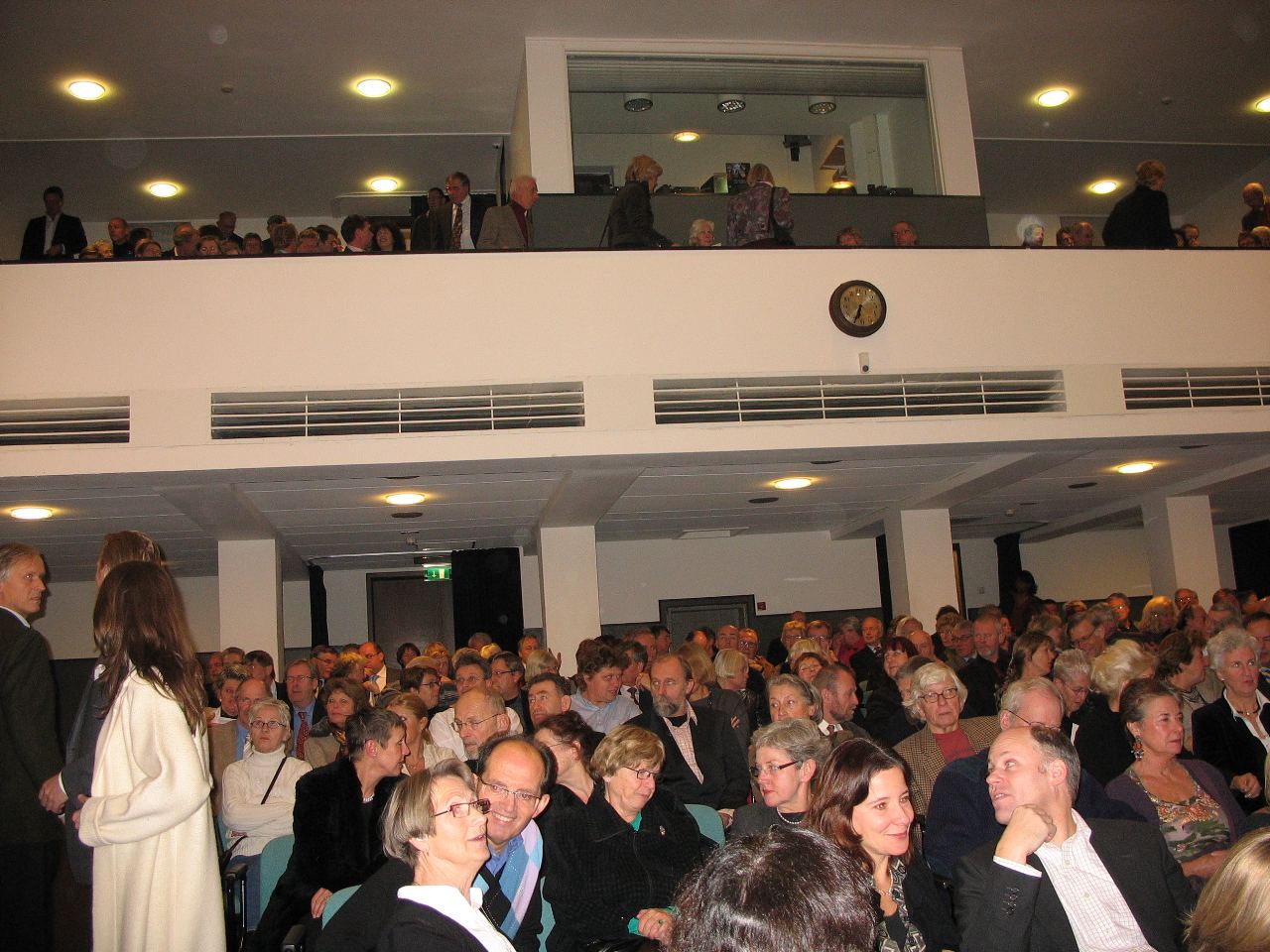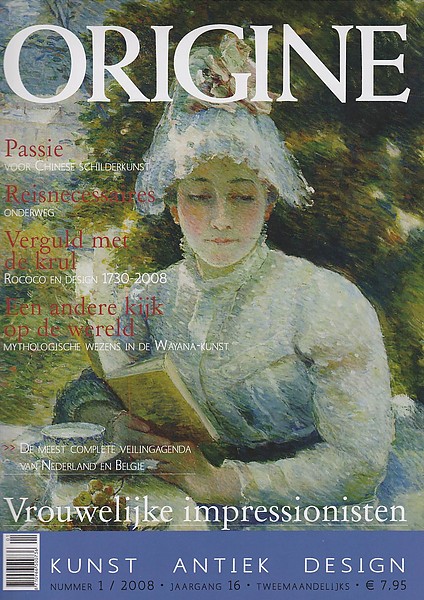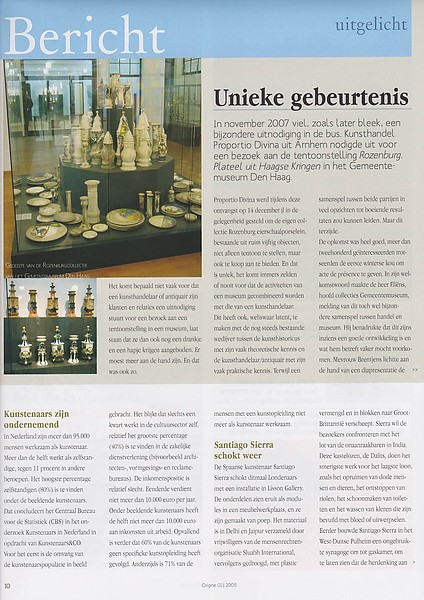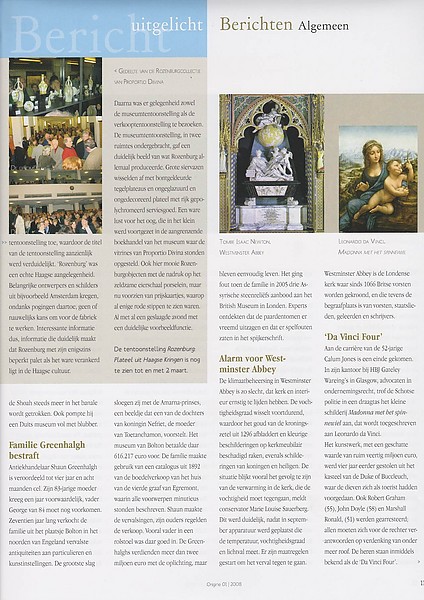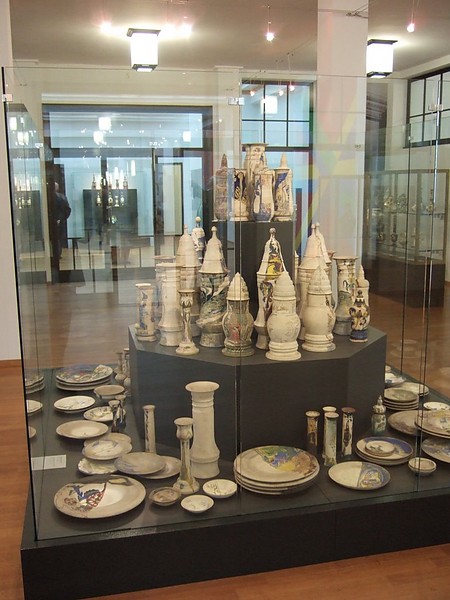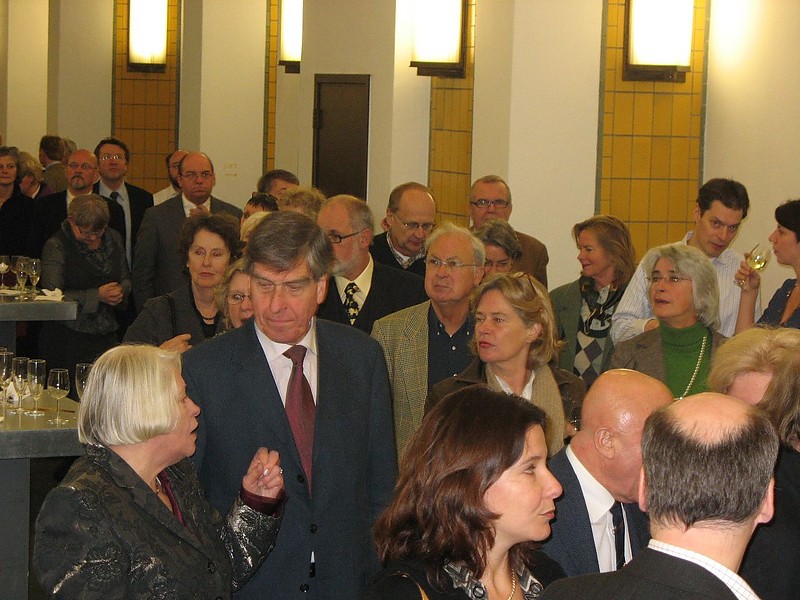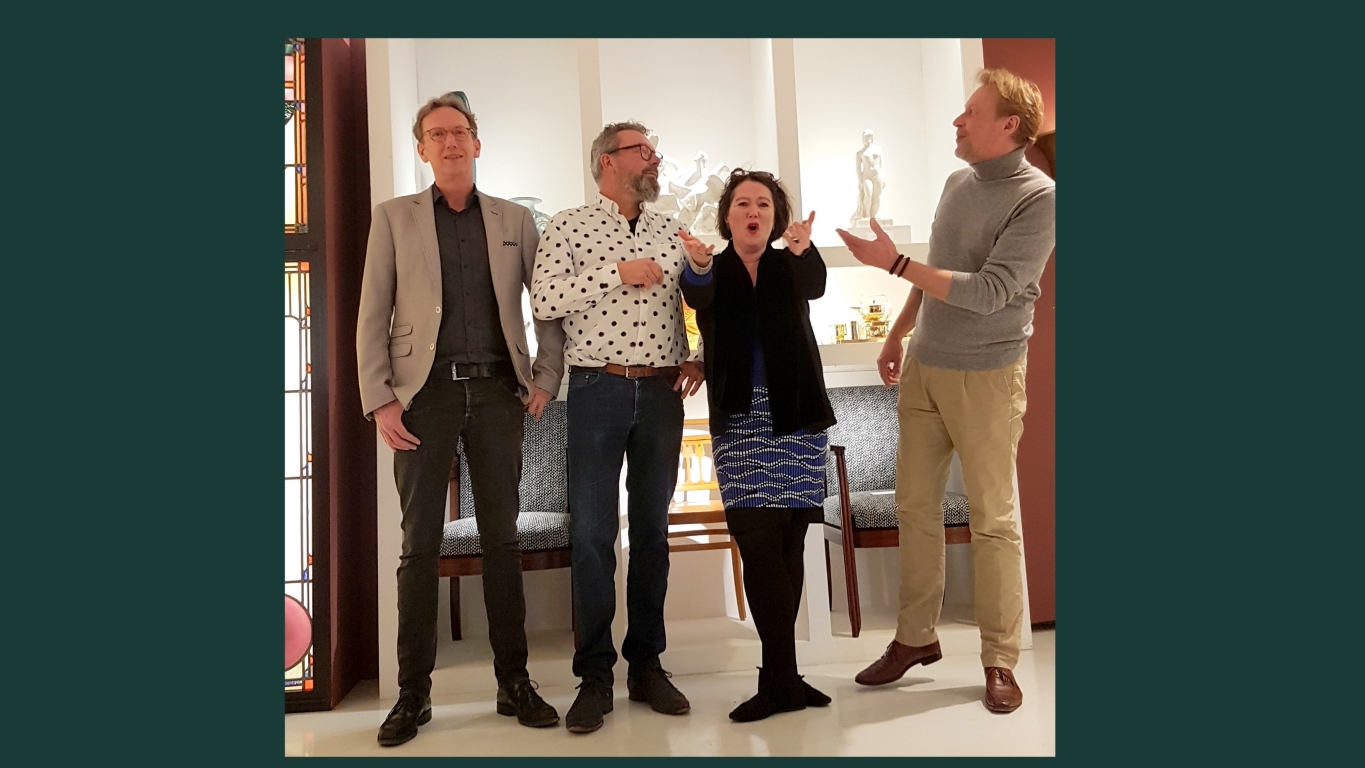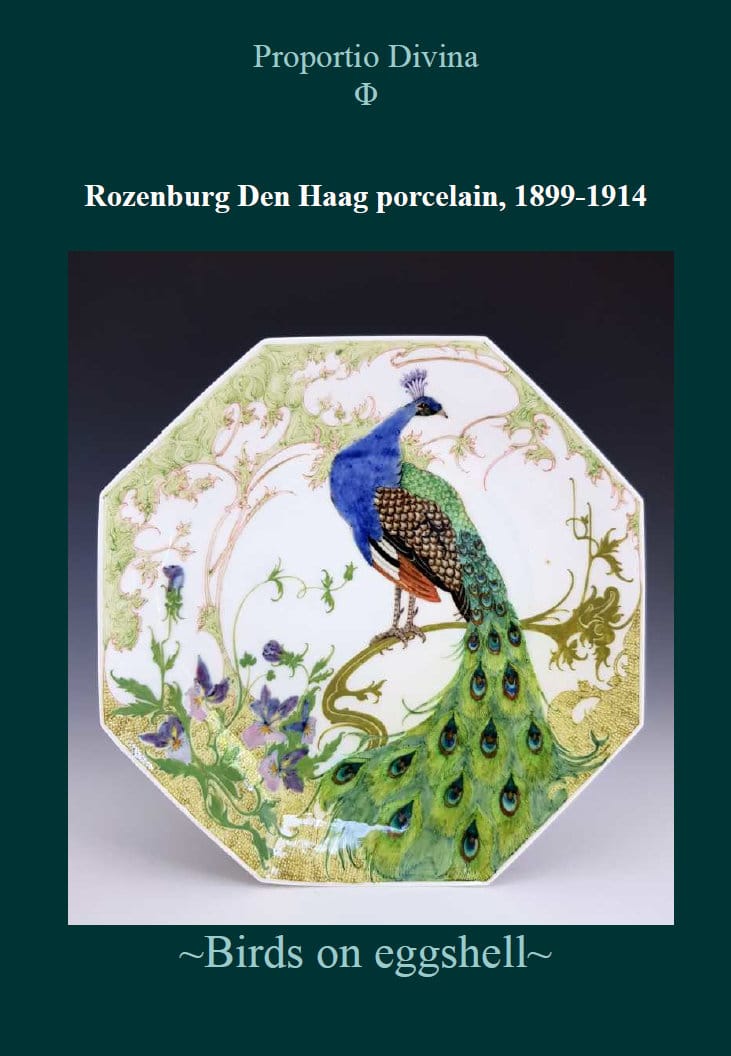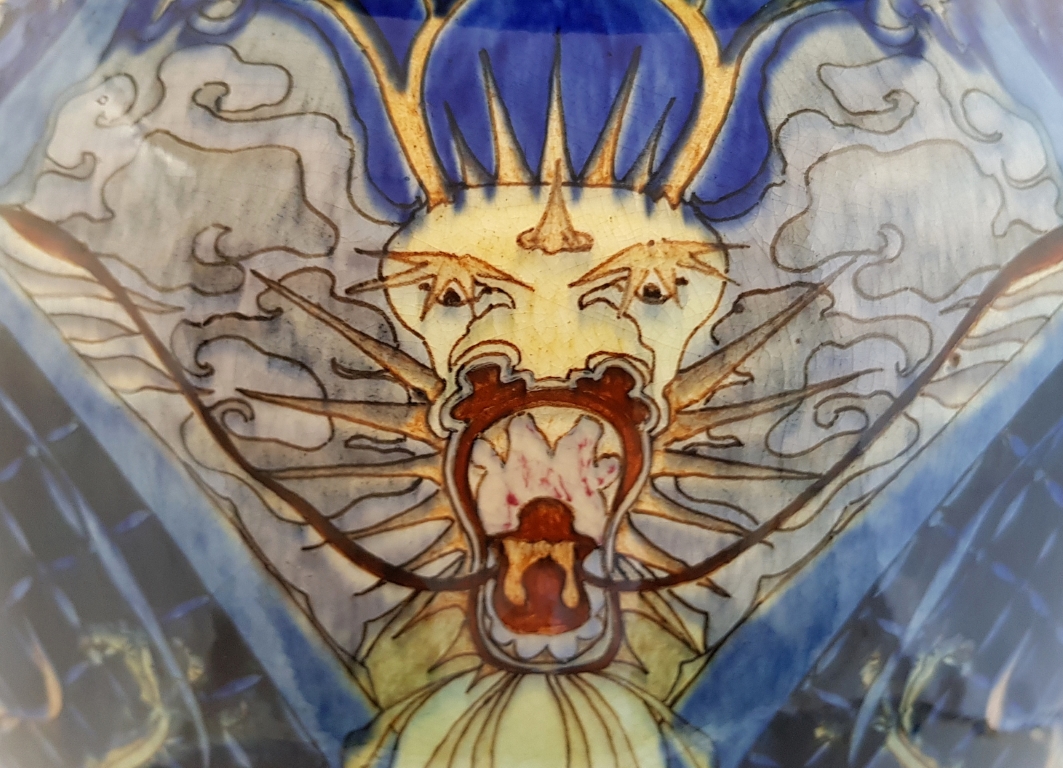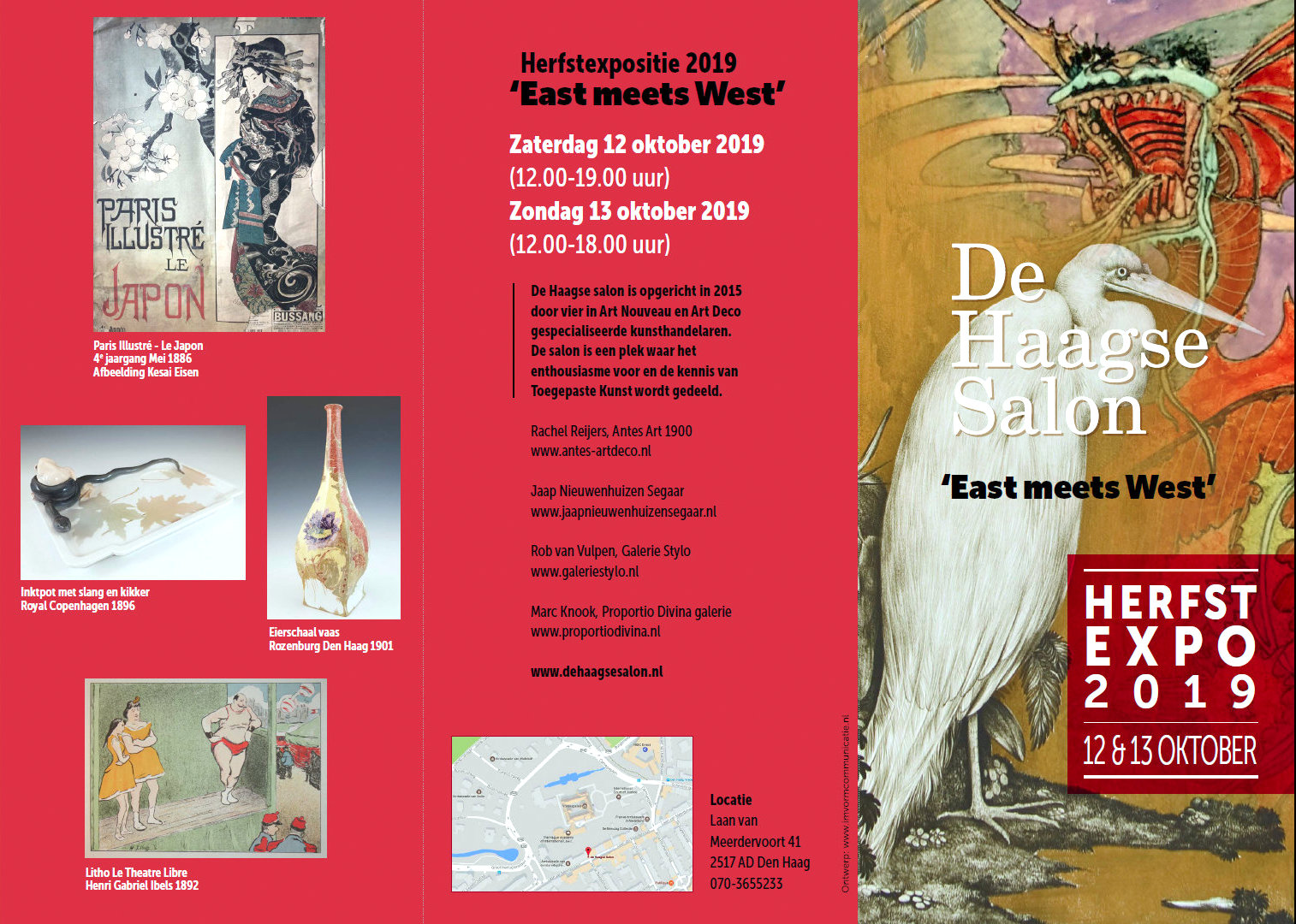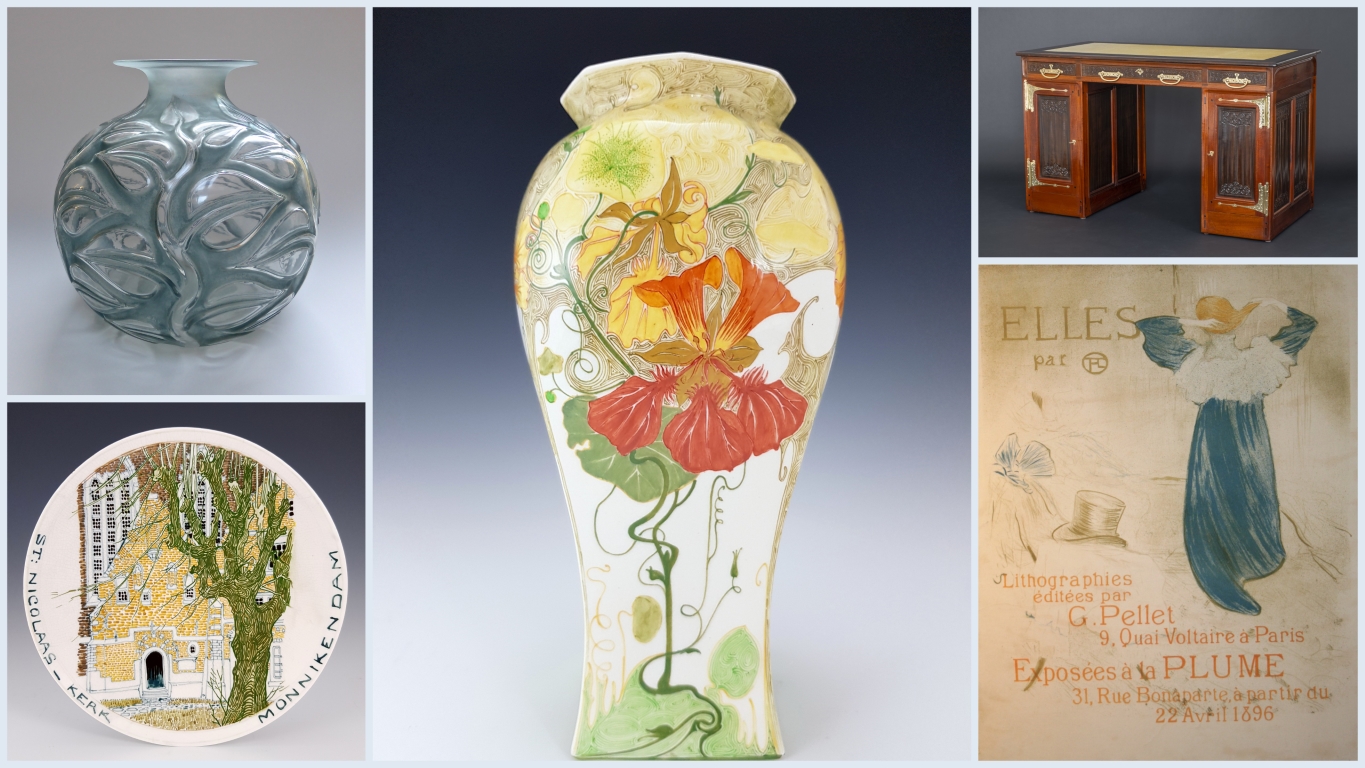A review of the exhibition “An evening at the museum”, by Anton van der Gulik (chief editor Origine ), published in Origine Art Magazine Januari 2008. Translated from Dutch by Peter Boel.
News – Spotlight
A Unique Event
By Anton van der Gulik
In november 2007, I received what turned out to be a quite special invitation in the post. Art shop Proportio Divina invited me to the exhibition Rozenburg. Delftware from Hague circles in the Gemeentemuseum in The Hague.
It doesn’t often happen that an art dealer or an antiquarian sends his customers and relations an invitation for a visit to an exhibition in a museum, and it is even rarer that drinks and refreshments are offered as well. There had to be more to this. And there was.
During this reception, Proportio Divina was given the opportunity not only to exhibit their own collection of Rozenburg eggshell porcelain, consisting of more than fifty objects, but also to offer these objects for sale. This is unique, as it hardly ever happens that the activities of a museum are combined with those of an art dealer.
That may be partly due to the slumbering but still existent rivalry between the art historian, with his mostly theoretical knowledge, and the art dealer/antiquarian, whose knowledge is often more practical. Yet, team efforts between these parties can lead to results which are interesting in many respects. But let us not digress.
The turnout was very good: more than two hundred interested people faced the first wintry cold to attend. In his welcoming speech Mr Eliëns, the head of collections of the Gemeentemuseum, mentioned that this cooperation between the commercial and the museological worlds was quite special. He emphasized that he considered this a positive development, and that in his opinion it might occur more often.
Mrs Brentjens explained the exhibition with the help of a slide presentation which clarified the title of the exhibition admirably. ‘Rozenburg’ was an exclusive Hague affair. Important designers and painters from Amsterdam, for example, tried to get a job at the factory but got little or no chance. This is all interesting information which makes clear that Rozenburg, with its somewhat limited palette, was, as it were, anchored in The Hague culture.
After this introduction there was the opportunity to visit both the museum exhibition and the sales exhibition. The museum exhibition, accomodated in two rooms, provided a clear overview of all the artwork produced by Rozenburg. Large ornamental vases were succeeded by brightly-coloured tile plaques, and unglazed delftware alternated with richly polychromed crockery. It was a feast for the eyes, which was continued in a more modest way in the museum’s adjoining bookshop, where Proportio Divina’s vitrines had been placed. Here also, there were beautiful Rozenburg objects, with the emphasis on rare eggshell porcelain, only these objects were adorned with price tags, some of which already had red dots.
All in all, the evening was a success, and it may serve as an example for the future.
